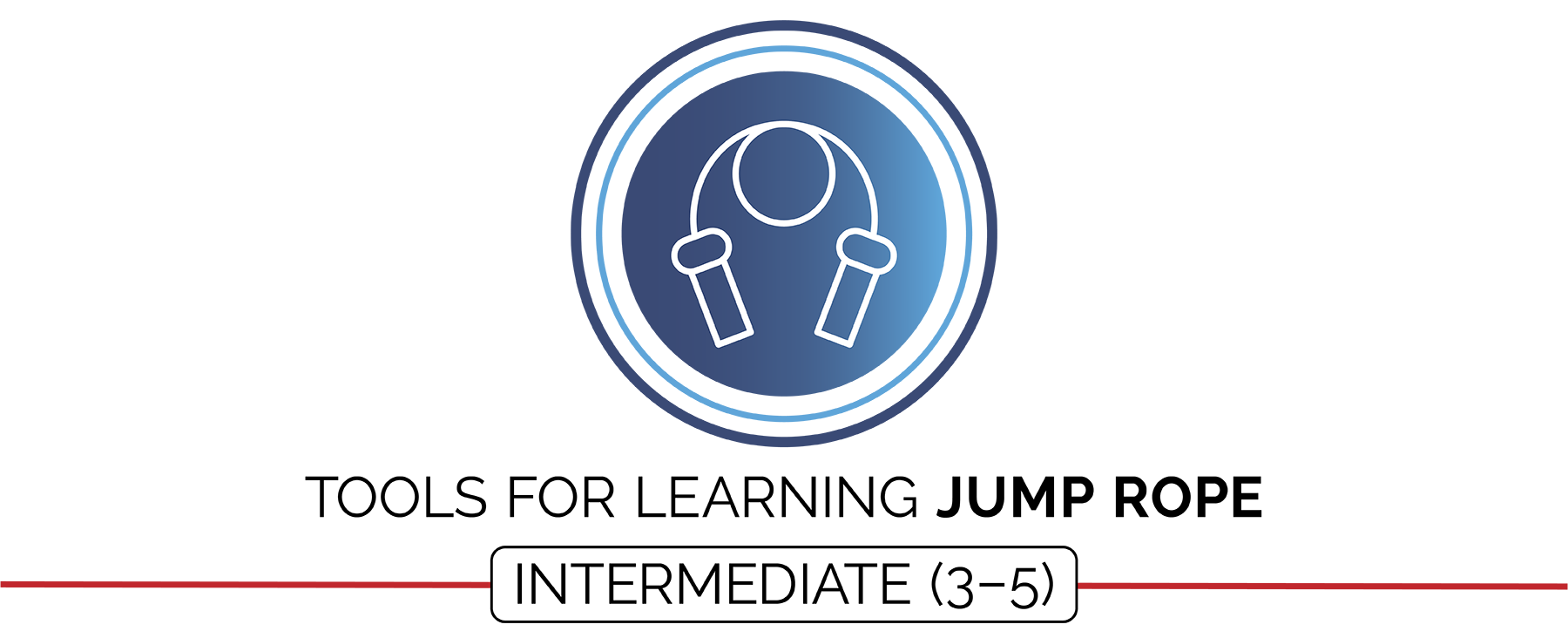Created by: Jenna Knapp & Aaron Hart
Special Contributions: Deedi Boland
Design: Jennifer Truong
For thousands of years, children have been jumping rope as a form of movement-based fun. This module reinforces basic rope jumping skills and then progresses from that point to include a variety of tricks, challenges, long rope jumping, and cooperative routines.
Jump rope participation provides valuable physical activity experiences for students that provide a relevant context for a variety of fitness-related lessons.
Jump Rope YouTube Playlist Courtesy and thanks to Kids Heart Challenge and North Attleboro Middle School.
Module Documents
Complete Module Packet:
Module Overview:
Universal Design Chart:
Required Materials:
All Module Activities:
Sample Lesson Plan:
Academic Language Cards:
Station Cards:
Rope Selection Rule Poster:
Jump Rope Progression Card:
Creative Mode Station Cards:
Long Rope Progression Card:
Rhyme Card:
Survival Mode Station Cards:
Activity Plans
Back to Basics:
Creative Mode Stations:
Jump Rope Battle Bags:
Match Me If You Can:
Long Rope Basics:
Long Rope Rhymes:
Survival Mode Stations:
Jump Routines:
Station Day:
Jump Rope Videos
- Full YouTube Playlist: [YouTube]
- Basic Jump: [YouTube]
- Toe to Toe: [YouTube]
- Ski Jump: [YouTube]
- Side Turns: [YouTube]
- Side Turn Jump: [YouTube]
- Kick Bounce: [YouTube]
- Heel Toe Bounce: [YouTube]
- Heel to Heel: [YouTube]
- Double Under: [YouTube]
- Bell Jump: [You Tube]
- Cooperative Turning – Long Rope: [YouTube]
- Center Jump – Long Rope: [YouTube]
- Enter & Stay –Long Rope:[YouTube]
- Add a Jumper – Long Rope: [YouTube]
Assessments
Jump Rope Routine Task Card:
Self-Assessment Worksheet:
Holistic Performance Rubric:
Dual Performance Rubric:
Academic Language Quiz:
Teacher Evaluation
Teacher Self-Evaluation and Reflection Guide:
Planning Tools
Blank Activity Plan Template:
Blank Lesson Plan Template:
Can’t see the file links? Register for FREE today to access all of the modules. SIGN UP HERE
National Standards and Outcomes Focus for Jump Rope Skills
Standard 1. Demonstrates competency in a variety of motor skills and movement patterns.
- Outcome [E4.3&5]. Jumps and lands in the vertical plane using a mature pattern (3); Combines jumping and landing patterns with locomotors and manipulative skills in dance, gymnastics and small-sided practice tasks/games environments (5).
- Outcome [E27.3-5]. Performs intermediate jump-rope skills (e.g., a variety of tricks, running in/out of long rope) for both long and short ropes (3); Creates a jump-rope routine with either a short or long rope (4); Creates a jump rope routine with a partner, using either a short or long rope (5).
Standard 2. Demonstrates the knowledge and skills to achieve and maintain a health-enhancing level of physical activity and fitness.
- Outcome [E3.3-5c]. Combines movement concepts (direction, levels, force, time) with skills as directed by the teacher (3); Applies the movement concepts of speed, endurance and pacing for running (4a). Analyzes movement situations and applies movement concepts (e.g., force, direction, speed, pathways, extensions) in small-sided practice task/game environments, dance and gymnastics (5c).
Standard 3. Demonstrates the knowledge and skills to achieve and maintain a health-enhancing level of physical activity and fitness.
- Outcome [E3.3-5]. Describes the concept of fitness and provides examples of physical activity to enhance fitness (3); Identifies the components of health-related fitness (4); Differentiates between skill-related and health-related fitness (5).
Standard 4. Exhibits responsible personal and social behavior that respects self and others.
- Outcome [E4.3-5]. Works cooperatively with others (3a); Praises others for their success in movement performance (3b); Praises the movement performance of others both more and less-skilled (4a); Accepts “players” of all skill levels into the physical activity (4b); Accepts, recognizes and actively involves others with both higher and lower skill abilities into physical activities and group projects (5).

